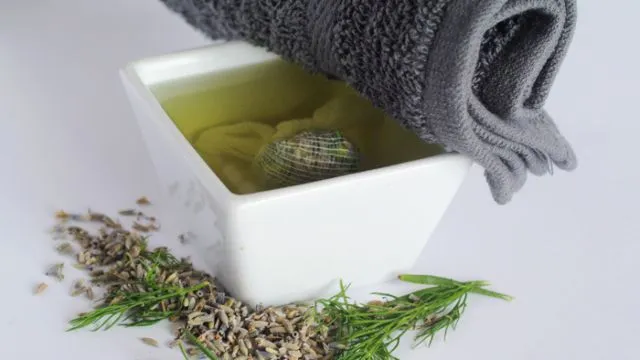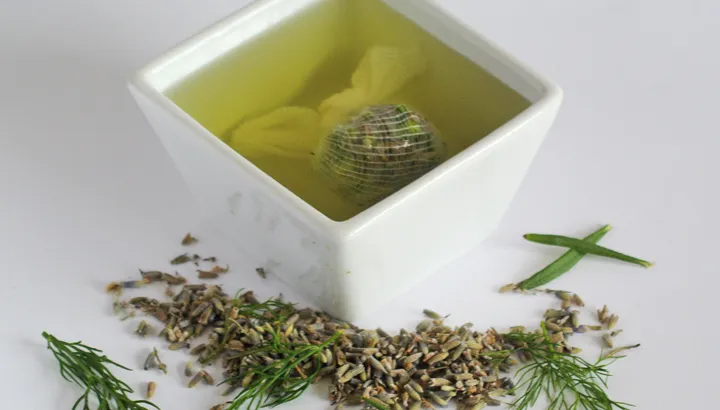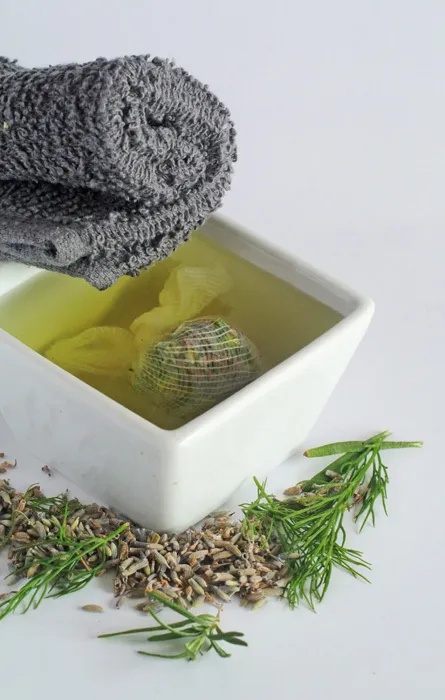
- Share on Facebook331
- Share on Pinterest
- Share on Twitter
If you’re an athlete, you’ve probably come into contact with a cold compress once or twice before. Addressing sprains, swelling and bruising, a cold compress can work wonders. This non-invasive remedy helps treat soft tissue injuries, and with the help of some natural herbs, it will also reduce inflammatory markers.
Herbs to the rescue
Accompanied by rosemary and lavender, today’s star is dill — an herb that’s no stranger in our house during the fall months, when pickling season is in full-swing. This combination can help fight inflammation — often a symptom of something greater, including both acute and chronic conditions.
Related: How to Stop Inflammation Naturally Before It Stops You
With a number of anti-inflammatories on the market, patients have access to treatment, however, prolonged use is leading to a long list of adverse effects. Instead, herbal tinctures are highly effective for internal use, whereas a cold compress can be applied externally, treating symptoms of arthritis, inflammatory eye conditions and more.
Within one study, published in the Iranian Journal of Pharmaceutical Research, rats were injected with formalin, promoting inflammation. They were then treated with dill oil or Diclofenac, an anti-inflammatory drug often used to treat symptoms of both osteo- and rheumatoid arthritis.
On the first day, average paw volumes were not significantly different between the dill oil and Diclofenac groups — .30 and .32 respectively. On the second day, however, the dill oil rats’ average inflammation was .15, in comparison to .36 for the Diclofenac group. It was concluded that dill oil was more effective than this common drug.
With the addition of rosemary and lavender, you can create a cold compress that will act as a potent anti-inflammatory. Whether you’d like to boost the healing process for internal or external symptoms, a cold compress will transport beneficial oils and herbs to your skin’s tissues.

When a cold compress is applied, you will reduce swelling and inflammation, while combating minor to moderate pain. This is especially helpful when you want to reduce heat to the area, since a cold compress will constrict blood vessels, soothing rashes and other inflammatory skin conditions.
As mentioned, in addition to dill, the recipe below includes rosemary and lavender. Rosemary increases an enzyme that removes superoxide — a free radical that is associated with chronic inflammation. You can read all about rosemary’s anti-inflammatory effects here.
Lavender has also been widely studied based on its anti-inflammatory properties, with results published in The American Journal of Chinese Medicine. When human monocyte cells — a type of white blood cell— were exposed to LPS-induced inflammation, lavender essential oil inhibited inflammatory effects.
|
Make your own anti-inflammatory cold compress
|
| Prep Time: |
| 1-2hours |
| Cook Time: |
| no cooking |
| Total time: |
- Clean cloth
- 2tbsp fresh dill
- 2tbsp dried lavender
- 2tbsp fresh rosemary
- Simply make an herbal tea by steeping your herbs in hot water. Pour hot water directly onto your dill, lavender and rosemary. You can also create a little herbal pouch using a muslin bag or gauze.
- Once you’ve made a potent blend, cool to nearly freezing temperatures.
- Soak a clean cloth and apply the herbal compress to the affected area(s).
- Leave on for 20 minutes — applying this compress three times daily.

Please note: Since inflammation and swelling can be a sign of something more serious, if symptoms continue to worsen, it’s imperative that you seek a professional opinion.
–Krista Hillis
- Share on Facebook331
- Share on Pinterest
- Share on Twitter

